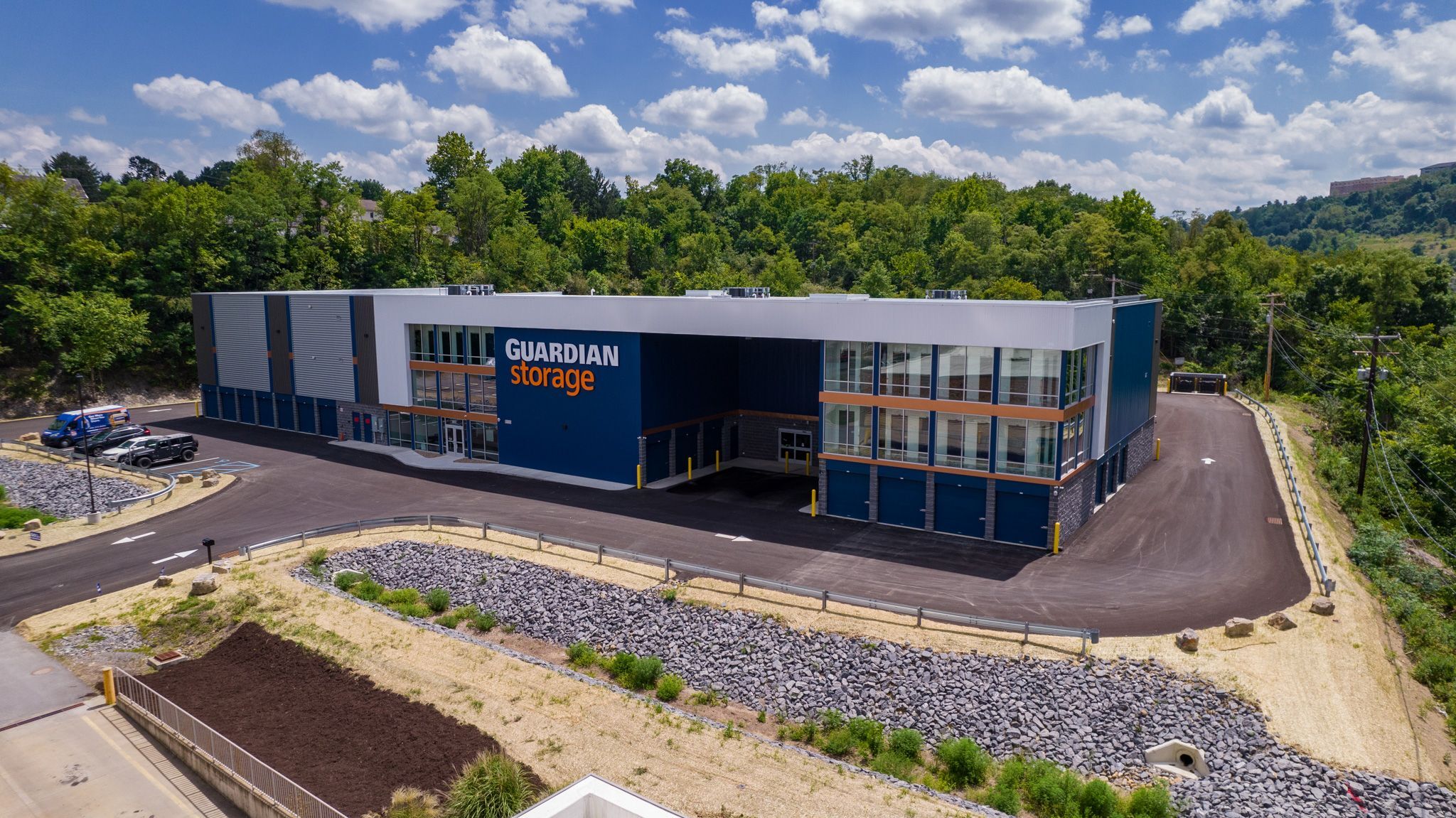Sunny Or Stormy?
The 2017 Financial Forecast
Without a doubt, the past few years have brought about record-breaking numbers for the self-storage industry—from historically high occupancy rates, property valuations, and rental rates to historically low interest rates and cap rates. While many of those highs and lows can be attributed to increased demand for self-storage and an overall lack of new supply, the abundance of new capital available for self-storage financing also correlates with lenders having a better understanding of the business.
Moreover, lenders are finding self-storage to be a good bet thanks to the robust operating principles of the asset class. Indeed, compared to other real estate sectors, self-storage has proven time and again that it can weather any storm, thus earning the label “recession resistant”.
With those factors in place, storage professionals agree that 2017 should be another good year for self-storage financing. As a matter of fact, some have even called the state of the finance market very healthy.
Shawn Hill, a principal at The BSC Group, LLC, concurs with Sherlock, stating that the lending market is healthy. “There is a good appetite among the lending community,” Hill says, adding that financial institutions are actively lending a variety of products.
Adding to the chorus of positive prognostication for 2017, Mikal Christopherson, vice president of self-storage bank for TCF Bank, states that the financing market is both stable and consistent. “The sector will continue to be well served and will continue to improve,” he says, acknowledging that the industry’s performance during the last recession strengthened its credibility in the lenders’ eyes.
“However, lenders in the market are mindful of what got them in trouble in the last recession,” says Christopherson. “They are being more careful.” For example, lenders are asking for more equity when risk is present.
John Good, president of Jernigan Capital, Inc., also calls the current state of self-storage financing stable and strong, especially for stabilized properties. “There is still plenty of financing available,” he says.
Good predicts that 2017 will be similar to 2016 in terms of lending, yet, like Christopherson, he believes that lenders have been—and will continue to be—more prudent during this development cycle than the last one. “2008, 2009, and 2010 are not that far in the rearview mirror,” says Good. “The Great Recession is still in people’s minds.”
Rates On The Rise
Even though these professionals agree that 2017 will be another good year, they acknowledge that some changes will occur. “2017 financing options should remain strong,” says Neal Gussis, principal at CCM Commercial Mortgage, LLC, “although there will be some headwinds this year.”
After a few years of historically low rates, the burning question is whether interest rates will rise in 2017. And, unfortunately, the answer is a resounding yes.
“Interest rates have increased since the election and are likely to increase more in 2017, which may have [an] effect not only on debt service but on loan proceeds,” says Gussis. He estimates that interest rates for CMBS loans tied to the 10-year Treasury will increase approximately three-quarters of a percent, while bank loans may increase a more marginal amount at 25 to 50 basis points (one-quarter to one-half of a percent).
Christopherson agrees with Gussis, adding that there is a possibility of additional interest rate increases throughout the year as prime markets are already experiencing rising rates. “The Fed may increase rates one or two more times,” says Christopherson. “They are already up 50 basis points.”
While Hill anticipates rates marginalizing in 2017, he reminds borrowers that they are still one percent lower than the interest rates of 10 years ago. “Absent a major event, I think rates will remain favorable with gradual increases over time,” he says, adding that one major spike in rates isn’t likely.
Hill also reminds borrowers to consider the possible effects of the inverse relationship between the spread and index. “The Fed Funds Rate is likely to continue to move upward, but that is only one component of the borrower’s cost of funds, the other is spread,” he says. “Notably in 2007, the all-in mortgage rate for self-storage assets (those originated via the CMBS market in 2007) averaged approximately six percent, when the corresponding Fed Funds rate was between 4.25 and 4.75 percent. A sample of CMBS loans originated in 2016 as a comparison had an average coupon of 4.8 percent, with corresponding Fed Funds Rate at or around 0.25 percent. For loans maturing in 2017, even with a projected Fed Funds Rate increase, borrowers should find an attractive rate.”
“Rates will move up,” says Good, “but how much is anybody’s guess.” Although he didn’t want to speculate as to the amount interest rates will rise, Good expects a movement in the 10-year treasury rate, from the two-percent range (as of January) to as much as 3.5 percent. “With a $20 trillion debt in the U.S., there’s an eye on the need for rates to return to more historical norms,” he says.
Expanding on that notion, Sherlock foresees several increases in 2017 and beyond. “The general consensus is that the Fed will be raising short-term rates several times this year, while the 10-year treasury yields, after the post-election bump, could increase from the current 2.4 percent range into the threes or fours in the coming year and possibly higher as we look further out,” Sherlock says. “If bonds move out that much, cap rates will most likely increase to some extent.”
Speaking of cap rates, Good believes they will stay stable in 2017. He adds, “There is still plenty of self-storage capital on the sidelines looking for a home.”
Nevertheless, Gussis believes that cap rates may experience a gradual increase. “As a general rule, cap rates lag interest rates and cost of capital,” he says. “If the cost of capital should increase this year, it is likely that cap rates will start moving up incrementally as well. Cap rates, however, do not move in direct correlation. I believe, because of the unique attributes of self-storage and the strong market fundamentals of more stable occupancy and [the] possibility to achieve year-over-year increases in revenue, cap rates will likely not increase at the same level of other commercial real estate sectors, should in fact cost of capital rise.”
What’s Available?
With rates likely to remain low, and plenty of financing options available, the outlook is certainly bright for developers as well as operators who are looking to refinance loans. “It’s a good year to refinance,” says Hill. “Borrowers are in an enviable position with lots of choices.”
According to Gussis, the primary lenders for self-storage loans are banks, CMBS lenders, credit unions, and life companies. “For permanent financing, in particular, banks have become more aggressive and are offering a wider variety of terms to benefit owners,” Gussis says.
Those beneficial terms include reduced recourse, longer fixed-rate periods, softer prepayment penalty structures, and higher leverage. However, Gussis warns that the high level of maturities of current loans in 2017 is providing lenders with more opportunities to be selective about the transactions they choose to finance.
“2017 should be a busy year for permanent lenders, bridge lenders, and construction lenders with growing loan and equity volumes for self-storage,” says Sherlock. “That being said, we believe it’s likely that loan pricing will steadily increase during the year, so it will be better for borrowers to act early rather than later.”
Although the opportunities for experienced self-storage developers with capital are plentiful, the same cannot be said for those who are either new to the industry or lack significant net worth. In fact, they may not be able to obtain financing without forming a partnership or joint venture. “Their best alternatives are Jernigan Capital or certificate of occupancy deals with REITs,” Good says. “Developers without a lot of self-storage experience are coming to us. We have a big pipeline of deals.”
Additionally, Sherlock mentions that increased credit standards and stricter underwriting could prove problematic for inexperienced borrowers. “The level of risk awareness on the part of lenders has been increasing,” he says, “and that typically favors the more experience and better capitalized borrowers in the market.”
Construction financing is somewhat restricted as well. “Construction are likely to remain available but not easily available. Experience and well-capitalized borrowers are best positioned to continue to have access to development financing,” says Gussis, adding that “non-recourse construction loans are very rare, but under the right circumstances developers are securing loans with completion guarantees through certificate of occupancy. Jernigan Capital is the most prominent lender in the sector that is offering these types of loans.” New developers could also seek construction loans through banks that offer SBA financing.
Unfortunately, the challenge of finding financing may continue to become more difficult for new storage developers. “We also anticipate that construction and bridge lenders’ increased focus on the financial strength and development experience of the borrower could result in a bifurcated market where the ‘haves’ see the best structure and pricing while the ‘have-nots’ experience more expensive debt, more required equity, and tighter constraints in the structure of their capital,” says Sherlock.
On another note, in regards to CMBS loans, Gussis warns borrowers that, due to new CMBS regulations, CMBS lenders will be more selective when it comes to $2 million to $5 million deals. “There’s a bias against them,” he says, “so smaller deals will be harder to place, even if they are good deals.”
Above all, borrowers must recognize that every project is unique; therefore, professionals advise borrowers to be open to possibly pursuing a new financial avenue. “Financing in the market today requires a custom-suit approach versus an off-the-rack mentality,” Sherlock says. “The lending market is far from commoditized. Cash flow underwriting, credit analysis, and the lenders’ willingness to negotiate and structure loans is drastically different from on institution to the next. The best financing options today are achievable when a borrower employs a strong approach to understanding all the options available in their specific circumstance and creates a prudent level of competition for their loan.”
Expert Advice
Considering that the lending options are vast, these self-storage experts offer several important pieces of advice. For starters, Good and Gussis recommend doing business with a lender that knows the sector and understands the nuances of the property type.
“There are too many lenders that now understand the unique attributes to self-storage to be working with one that you need to teach,” says Gussis. “When dealing with these types of lenders, transactions typically take longer and have more risk of being re-traded or denied well down the road.”
The next tidbit is to mind the terms. “Overleverage kills,” Christopherson says. “Avoid deals where it’s a stretch.”
Hill expands on that notion, stating that borrowers should be especially prudent when dealing with construction loans. “Don’t underestimate the terms,” he says. “As rates tick up, have leverage in place to protect yourself from assumptions.”
And, don’t forget to consider extension options. “Our advice is to be thoughtful about the term of any loan relative to the time frame needed to execute the business plan as well as tests for extension options,” says Sherlock. “That’s a potential risk that should be thoughtfully managed by borrowers to avoid a maturity default.”
What’s more, to get the best terms and rates available, consider hiring a mortgage broker. Gussis says, “If you are not in the business of financing transactions often, seek an experienced mortgage broker as the market is always in flux and they put you in the best position to obtain market driven financing terms.”
Their final pointer: Strike while the iron is hot! “Don’t wait,” Sherlock says. “No one truly knows whether rates are going up or down in the near term and, as such, time is a risk element for your financing. Rates are still at historically attractive levels, the supply of capital is healthy, and lenders are active in the market. Those things together suggest it’s prudent to act now and not wait.”
And Gussis couldn’t agree more. “You cannot time the market,” he says. “Interest rates are still and should remain at relatively low rates throughout 2017.”
Future Of Financing
While no one knows exactly what the future will hold for the finance market, the only certainty is that change is inevitable. And, with President Trump now at the helm, the storage veterans interviewed for this article expect changes to occur over the next few years in regards to financing regulations.
“There has been a lot of conjecture about the impact of the new administration on the financing market,” Sherlock notes. “The area we see as most likely to feel the effects of change is the regulatory environment. Banks and CMBS lenders have been working against an increasingly strong tide of regulatory pressures and rule changes for at least the last year. While the new administration may ultimately amend and ease some of the regulatory pressure lenders face, we don’t expect wholesale repeal of risk retention regulations in the CMBS world or HVCRE [High Volatility Commercial Real Estate] regulations on the banks.”
And this could be a huge benefit to the self-storage sector. As Christopherson notes, “The relaxing of regulations may enable banks to lend more and terms will loosen.”
Sherlock also foresees an increase in the cost of capital over the next few years, especially if treasuries widen as projected. “One thing to keep in mind as higher treasury yields are discussed is that pricing real estate has multiple components, and, even if rates do rise, income growth and a more bullish investor sentiment that comes with a healthier economy could minimize the effect on property values,” he adds.
Still, Gussis, who points out that we are already experiencing some changes as a result of the election, such as the one percent increase in the 10-year treasury, feels the future of financing is more ambiguous than ever. “I think we are entering into the next couple years when any true forecasting is going to be difficult,” says Gussis. “The market is vulnerable to uncertainty and volatility.”
The Bright Side
Despite all the haze of the unknown, there are a few silver linings for the self-storage financing market. “The self-storage fundamentals remain strong,” says Gussis.
And Good doesn’t see those fundamentals changing anytime soon. “People are still buying. People are buying smaller homes or renting. Plus, the population will continue to grow,” he says.
“As long as property developers show discipline by not putting too much debt on real estate, and lenders are disciplined, they don’t lend too much or overleverage, we all can flourish,” says Good.
Erica Shatzer is the editor of Mini-Storage Messenger, Self-Storage Now!, and Self-Storage Canada.
More Content
Popular Posts
The self storage industry is in a precarious...
Like its name implies, Surprise, Ariz., a...
Joe Shoen has had enough.
Joe Shoen, CEO of U-Haul, has had enough.
In a record-breaking deal finalized May 12,...
Senate Bill 709 (SB709) has many in the...
Donald Trump has just reclaimed the White...
Self-storage operators wear a lot of hats....
The question of “abandonment” of stored...
In 1992, Clinton strategist James Carville...
Recent Posts
Occupancy data is arguably the hardest data...
With a commanding presence at 3517...
When Neville Kennard left for a work trip to...
Self-storage software is no longer...
The self-storage industry continues to...
Fires in California. Tornadoes in Kansas....
From policy pivots in Ottawa to tariff...
Self-storage operators have struggled to...



















